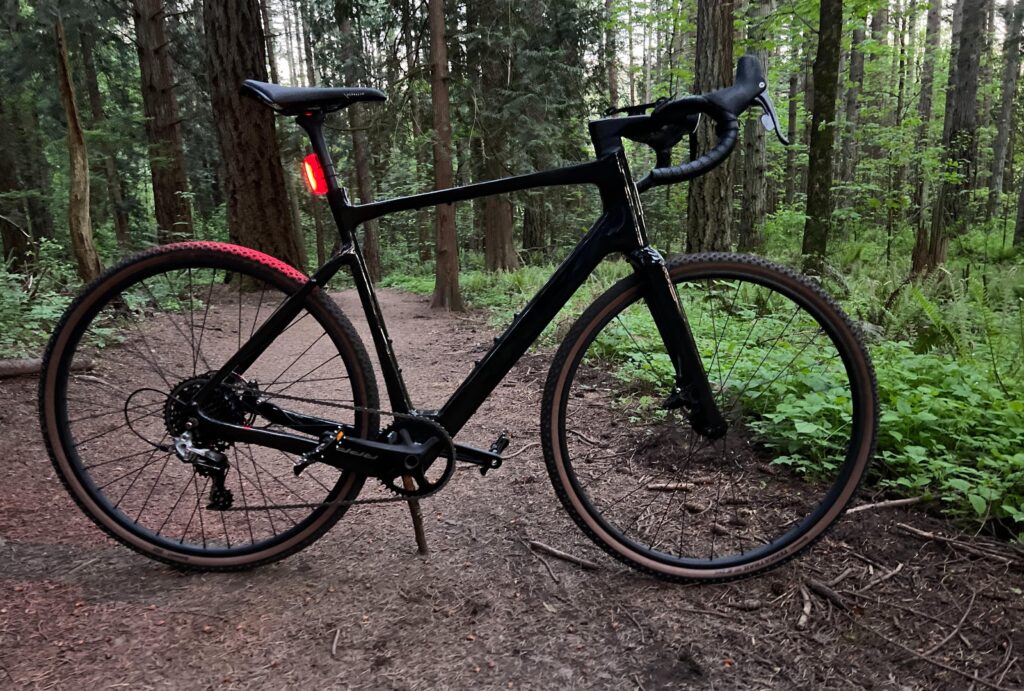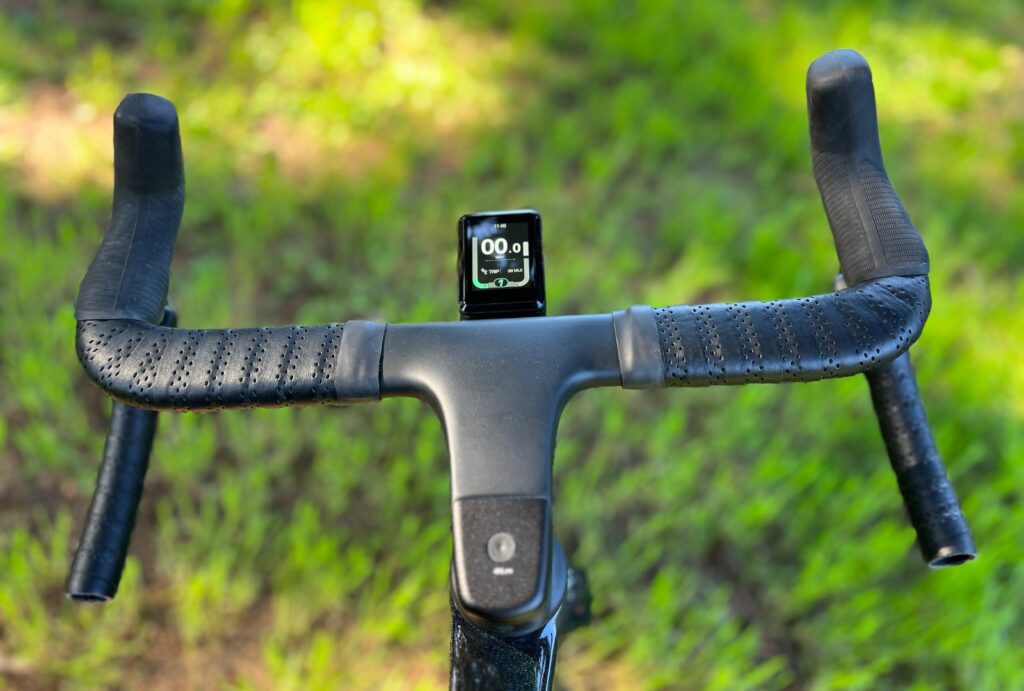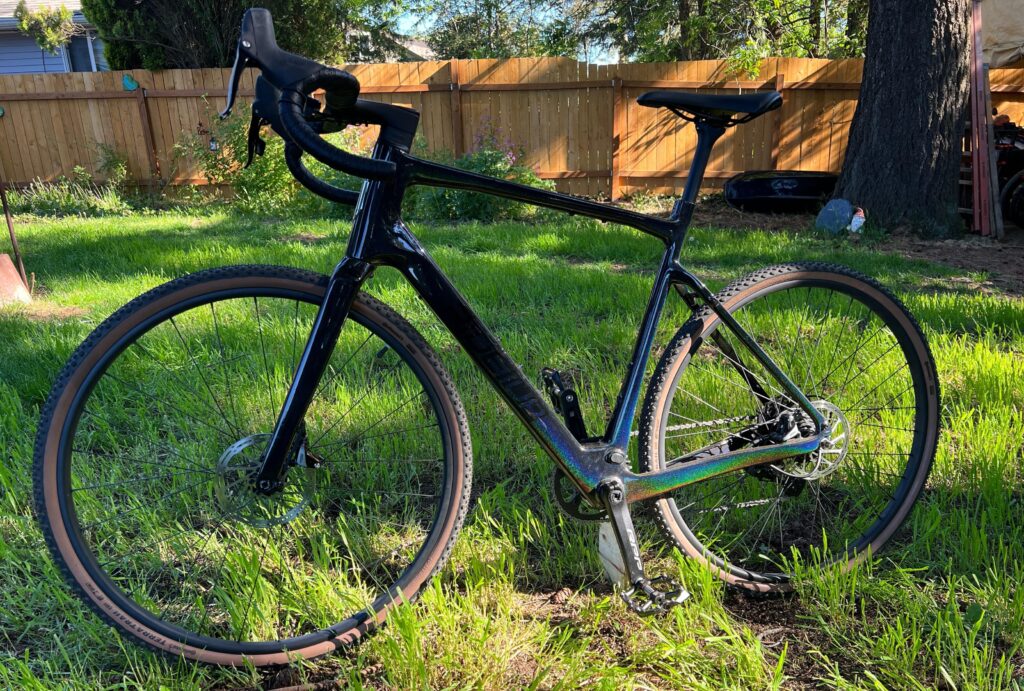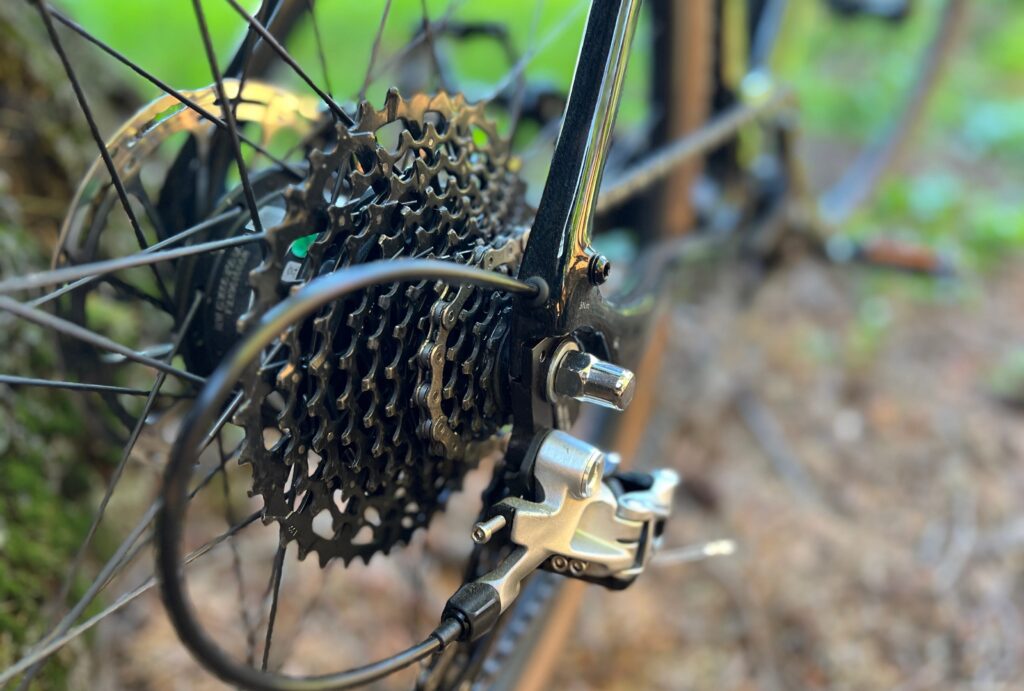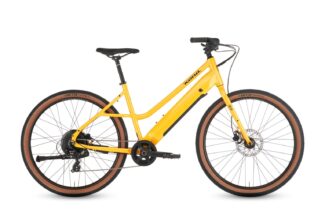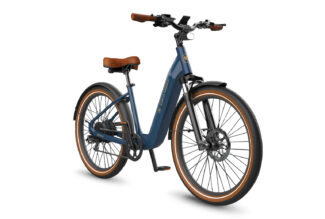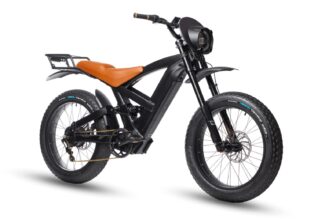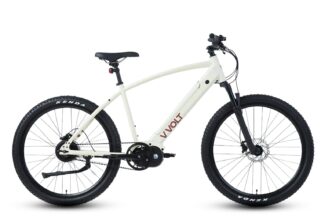Shipping and Assembly
Ride1Up is a direct-to-consumer (DTC) company. Typically, its bikes arrive 90% assembled, needing only the front wheel, handlebars, seat, and pedals attached. The CF Racer1, however, is quite a bit more involved.
The tool kit even includes a torque wrench, so we strongly encourage having a bike shop build it for you if you have any doubts. Cracking a carbon fiber frame can really ruin your day.
If you decide you’re up for the challenge of building this (or any) e-bike, good for you! I still must say, though, that it’s a good idea to have a bike mechanic check your torque values and confirm that everything is within specification.
I reviewed a press model of CF Racer1, so I didn’t build it myself. It first passed through the hands of a professional Portland-area rider/mechanic who built it to spec before arriving at my doorstep ready to ride.
Platform pedals are included with the bike when purchased, but for this review, I used my personal SPD-type clipless pedals and cycling shoes.
Apps and Connectivity

Ride1Up does not offer a dedicated app. However, the CF Racer1’s VeloFox DM02 display connects to smartphones via Bluetooth to work with fitness apps and diagnostic tools.
How the CF Racer1 Performed
Going 28 mph with nominal pedal effort on a sleek, minimalist electrified bicycle is a fantastic experience, especially for those not in peloton-level shape or who have been off high-performance bicycles for a while. And the CF Racer1 makes it all a reality.
Frame Components
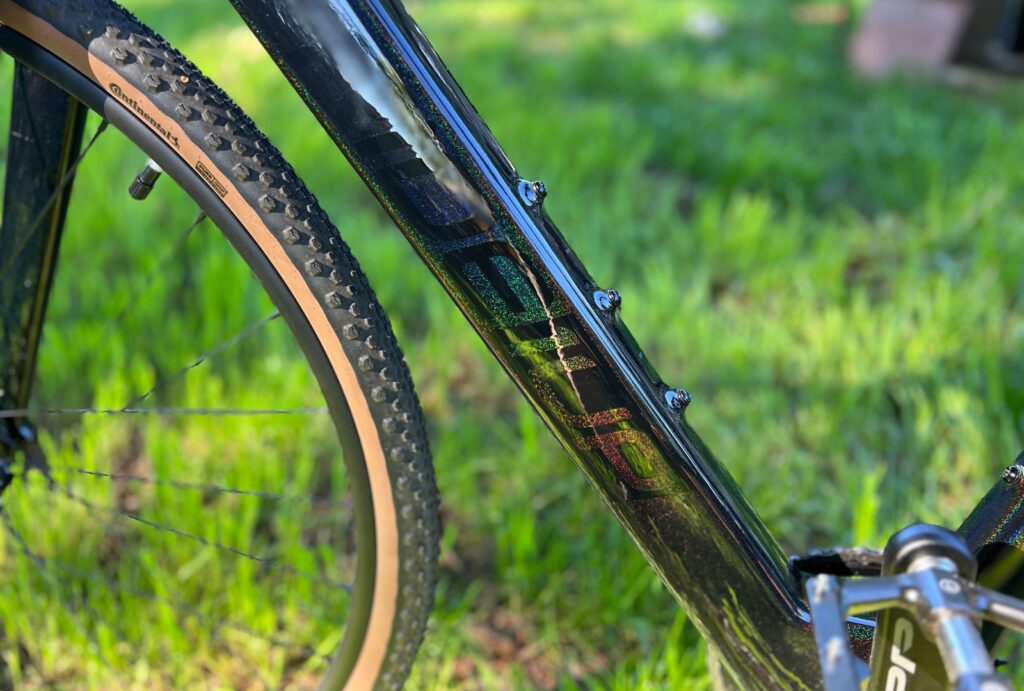
Neither CF Racer1 model has suspension, front or rear. It’s a pure hardtail. The entire frame, from the fork to the seat post, is carbon, making this Rid1Up’s first all-carbon e-bike.
Basing the CF Racer1 around a carbon-fiber frame brings numerous benefits, primarily an extraordinarily low weight. This ultra-lightweight frame means other components can be smaller and lighter since there’s less weight to move.
A great example of this is the battery. The CF Racer1 has a small 252 Wh battery (36 V 7 Ah) sealed in the frame. While you can’t regularly remove and charge it, a dealer or shop mechanic can still service it. The motor (which we get into below) is also small but effective, helping boost the overall efficiency and maintain a low weight.
The overall sum of all parts comes in under 30 pounds. Impressive, if you ask me.
Motor
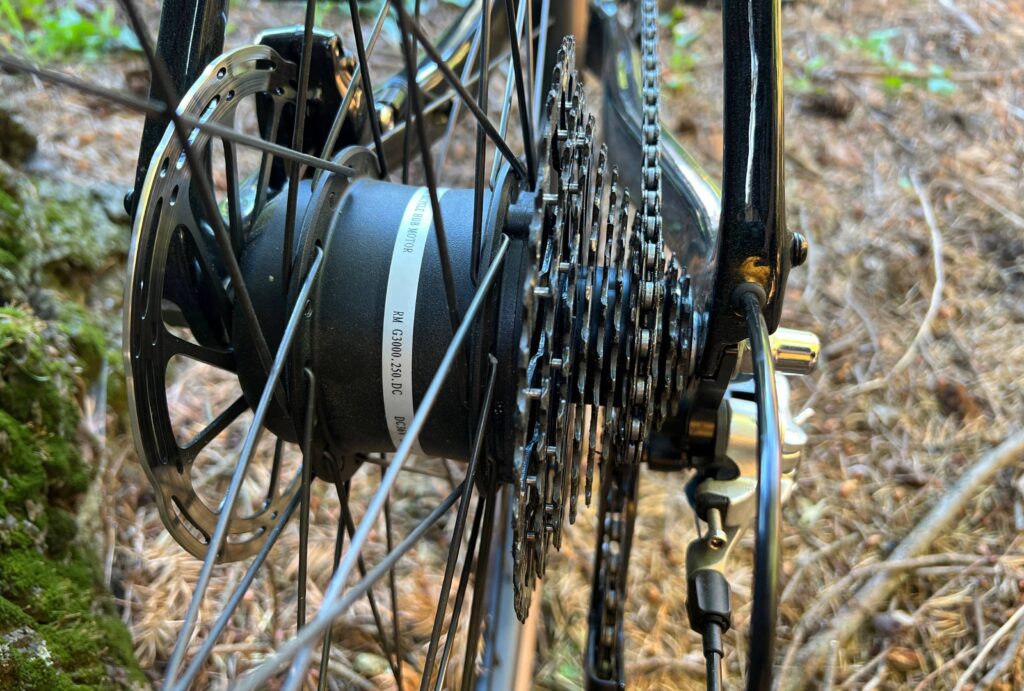

The vanishingly small rear Bafang hub motor is a fantastic feat of engineering. It can almost pass for a sizeable analog hub since it’s about the same size as some analog MTB rear hubs I used in the past.
It produces 250 W and 42 Nm of torque, which might seem a bit low. However, that’s plenty for this more pedal-focused drivetrain.
Note: One issue I encountered was that the motor did not want to engage when the CF Racer1’s derailleur was in 11th gear. I reached out to Ride1Up, and they told me this resulted from a misaligned adjustment screw blocking a small sensor.
Once rectified, the pedal assist worked as normal in 11th gear. This is a good reminder to have a professional inspect your e-bike after it is assembled to ensure everything is in spec.
Handlebars
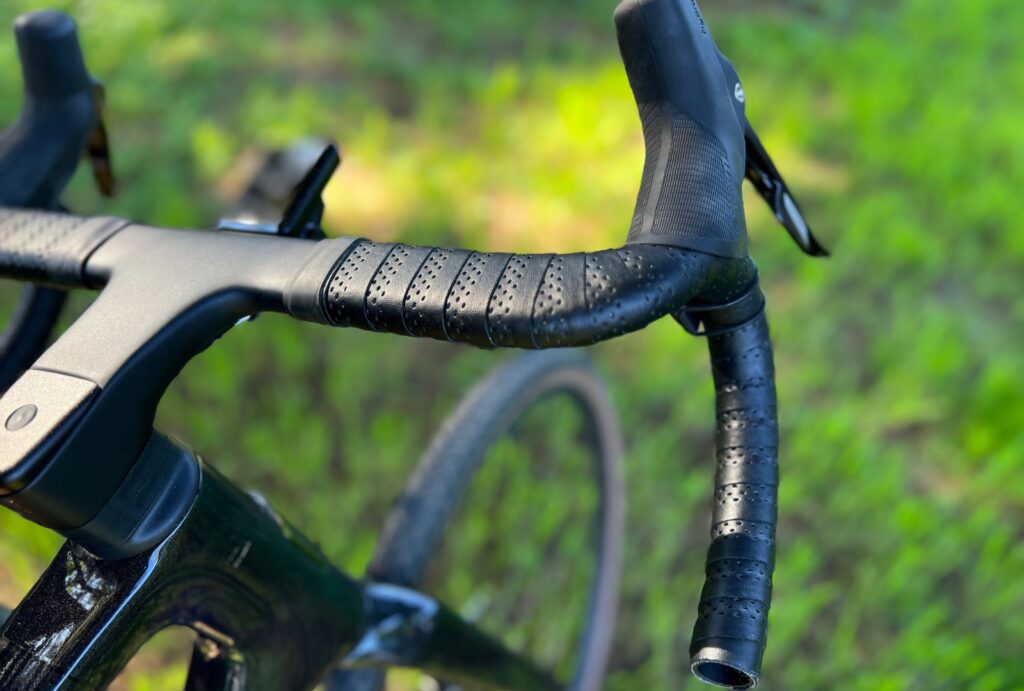

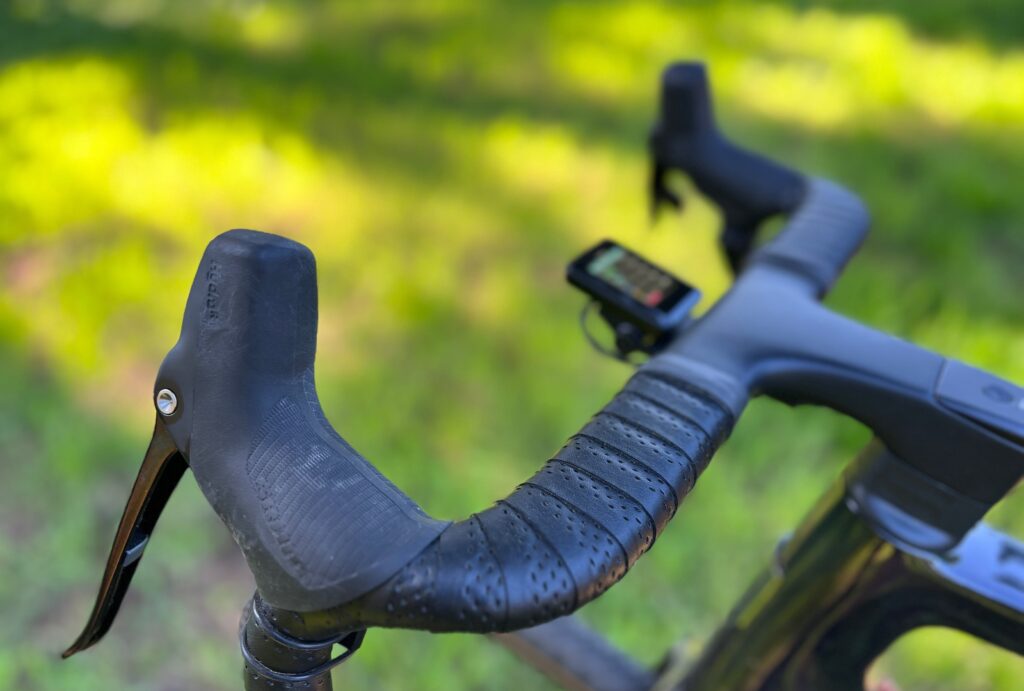
The carbon aero-style bars are proprietary to the CF Racer1. Not only do they work well, but they’re also comfortable. Even though the two power level and display change buttons are a bit of a reach, you learn quickly to operate them. The only downside is that if the bars get damaged years from now, replacement may be difficult.

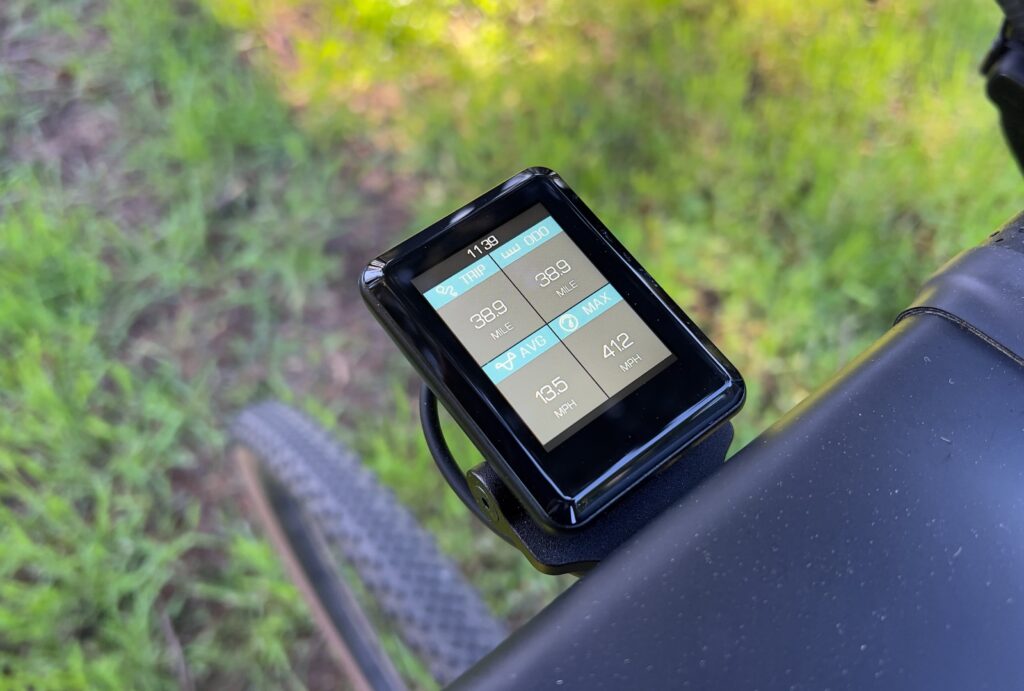
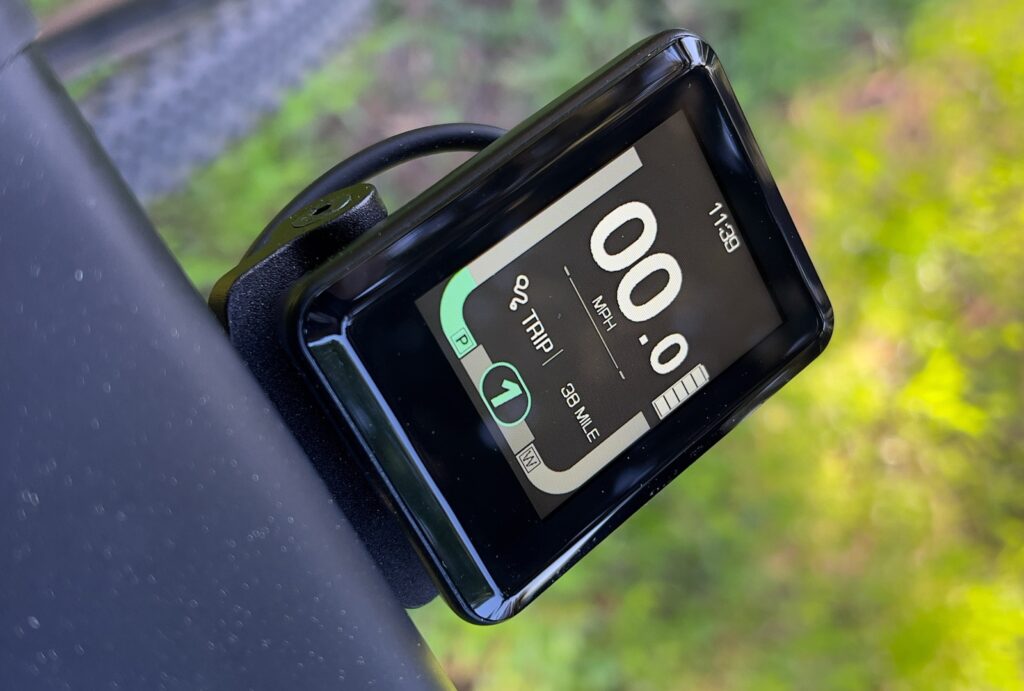
Extending from the handlebar’s center sits the VeloFox DM02 display. It’s small but concise, showing speed, assist level, and motor output by default. Tapping either button on the handlebars changes the assist level while tapping both simultaneously brings up a data screen showing distance, time, and performance metrics.
Wheels
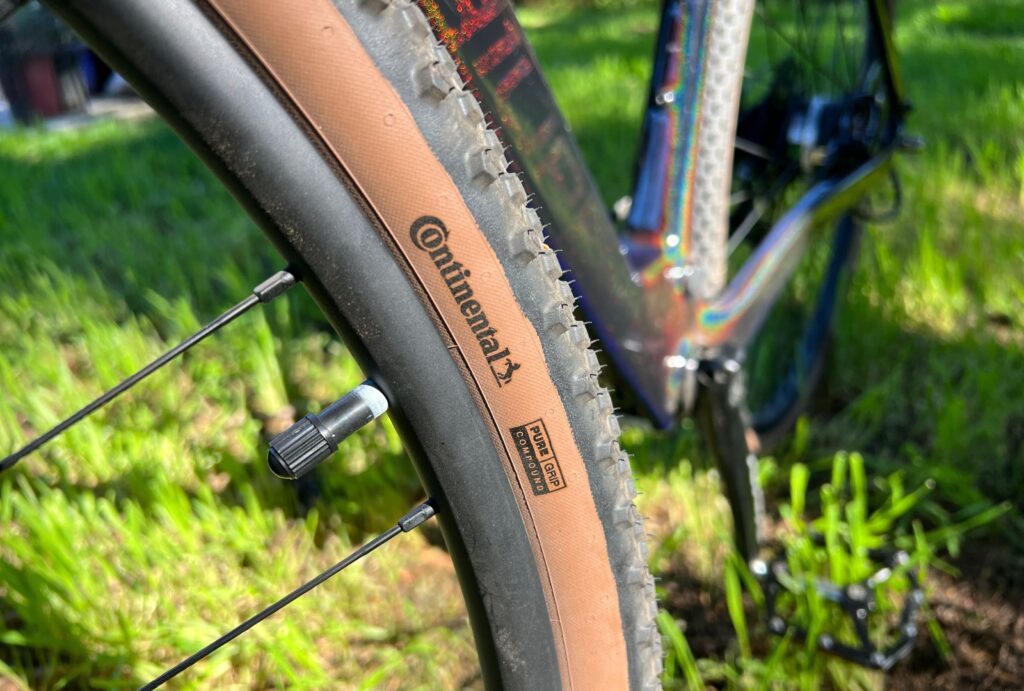
The CF Racer1 uses double-walled aluminum rims with Sapim 14G spokes. On the gravel model, the wheels are 16.5 mm deep with a 17.5 mm internal width. The road wheels measure 40 mm deep with a 17 mm internal width.
Saddle
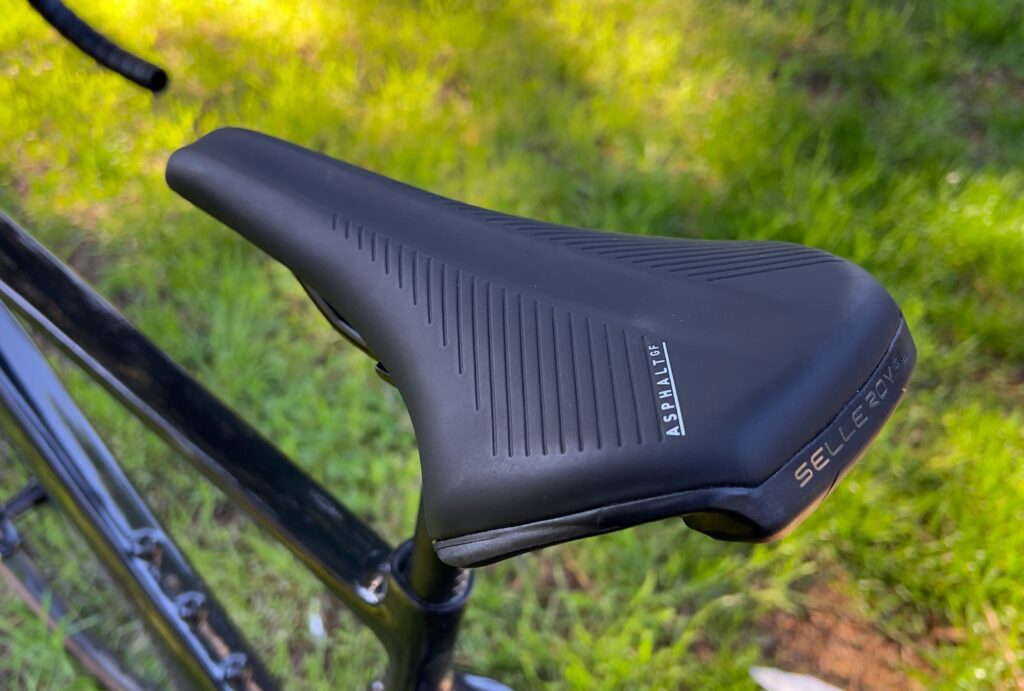
The CF Racer1 comes stock with a Selle Royale Asphalt GF saddle. I found the saddle a bit too firm, and it became uncomfortable after several hours of riding, even with padded cycling shorts.
However, the seat uses a standard post, so swapping in something different is easy.
Accessories and Cargo
I didn’t use any racks, bags, or other cargo systems with the CF Racer1. However, they are available from Ride1Up and the aftermarket if you want to commute or go long distances on the bike. I used a small backpack to carry tools and other items.
On/Off the Trail Performance

Since I had the gravel version with Continental Terra Trail 700 x 40c tires, I took the CF Racer1 off the pavement several times. With no suspension, the ride is rough and best done using the legs and arms as shock absorbers.
The frame has little flex, and any flex it might have is undetectable while riding — including off-road. That said, the tires had good grip in dirt and gravel, and it was fun to ride off-road. Just don’t expect it to perform like a mountain bike.
Comfort and Transportability
The CF Racer1 was reasonably comfortable for fairly long rides, but it was still a tiny bit small for this tester, who typically rides a 58 cm frame instead of the Racer’s 56 cm maximum size frame. Riders shorter than myself (6’1”) will likely fare better.
The CF Racer1’s extremely light weight makes it easy to portage up steps or onto a commuter train. I also popped it into the rear of my car with the seats folded down.
Hill Climb Test
My hill test is a 0.9 mi climb that gains about 700 feet in elevation on paved but bumpy two-lane public roads. I used SPD clipless pedals and cycling shoes while riding and added some basic lighting from Thousand for safety.
My first climb was with the power systems turned on but set to no pedal assist (Level Zero). The CF Racer1’s ultra-low weight and wide rear gear ratios made climbing the hill in analog mode an easy affair. Speeds usually stayed at about 10 mph, only sinking to 8 mph on steeper sections where I stood on my clipless pedals.
Using assist Level 1, the pace picked up a max of 13mph. With the motor set to assist Level 5 and some concerted pedaling, the speed peaked at 17 mph.
The CF Racer1 doesn’t have a throttle or boost function, although the motor will jump to 450 W of peak output power for short stretches.
| Attempt Number | PAS Level | Average Speed |
| Attempt 1 | 0 | 9 mph |
| Attempt 2 | 1 | 13 mph |
| Attempt 3 | 5 | 17 mph |
Brake Test

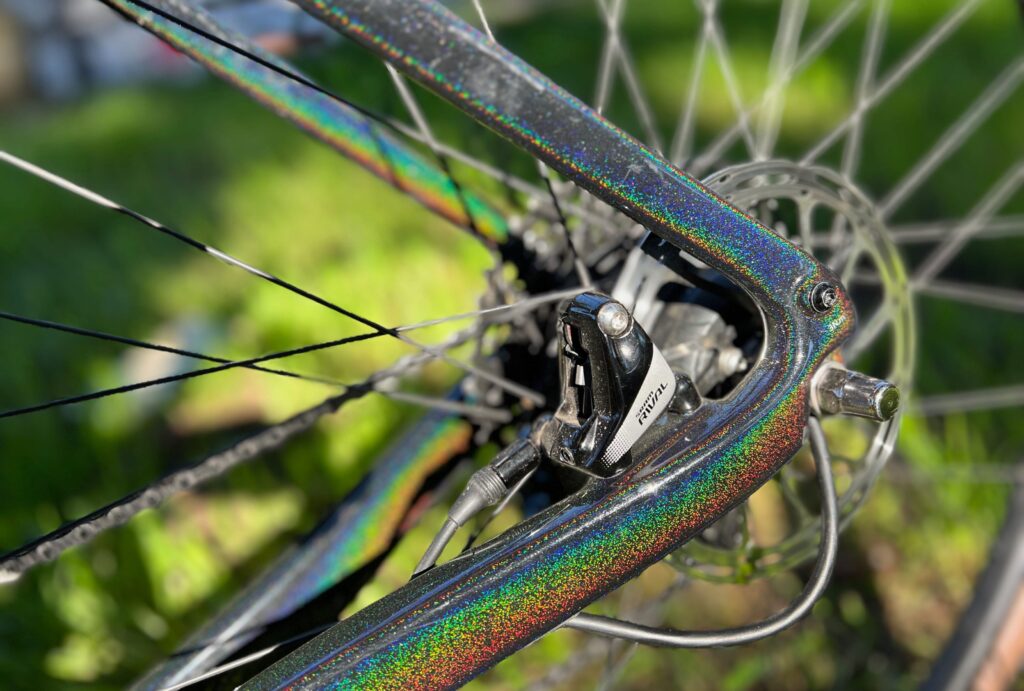
The 160 mm SRAM Rival 1 hydraulic disc brakes front and rear have great feel and power; locking either wheel is fairly easy. The power is progressive, however, and offers excellent control on fast downhills and strong response when needed for hard stops.
They were also essentially silent when in use, with no squeaks or howling. The brake mount bosses are comfortable to the hand, and the lever action is smooth and precise. The right lever houses the Rival 1 11-Speed Doubletap gear shifter.
Range Test
The CF Racer1’s stated range is 16-40 mi. A range test on a long, flat bikeway with only gentle inclines yielded 32 miles with assist set at level 4 (20 mph maximum assist).
A more mixed outing with steeper hills, urban riding, and some Level 5 maximum speed tests had the battery flat at 24 miles, which I found impressive. But again, since the bike is so light, riding it with no assist is not a hardship.
Things to Consider
With its primary goal of creating a super lightweight bike, Ride1Up had to leave out a few expected e-bike items. Lighting, racks, and fenders aren’t included — but easily remedied by the accessory catalog and aftermarket. After all, you’re generally expected to supply the pedals of your choice at this performance level.
I found the stock Selle Royal seat a bit too firm, even with padded bike shorts. It is also slightly oddly shaped (to me), which brought on discomfort after a couple of hours of riding. Again, this is a simple fix.
Not so simple is the proprietary aero-style handlebar, which doesn’t allow you to swap out for a different setup. Fortunately, it’s well-designed and comfortable, enclosing any wiring for an immaculate overall appearance.
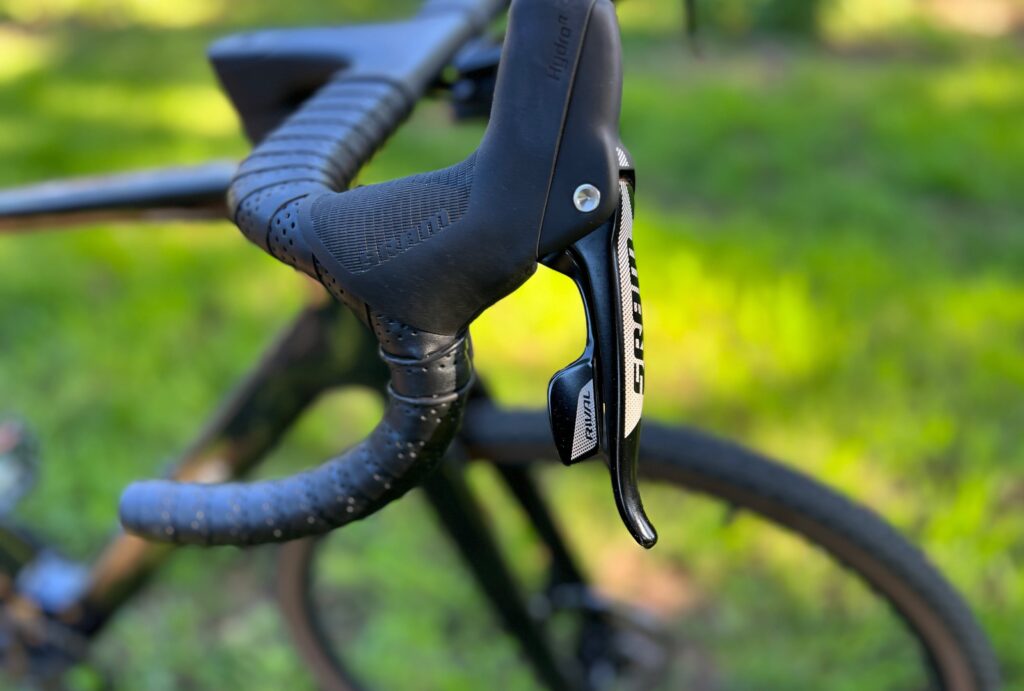
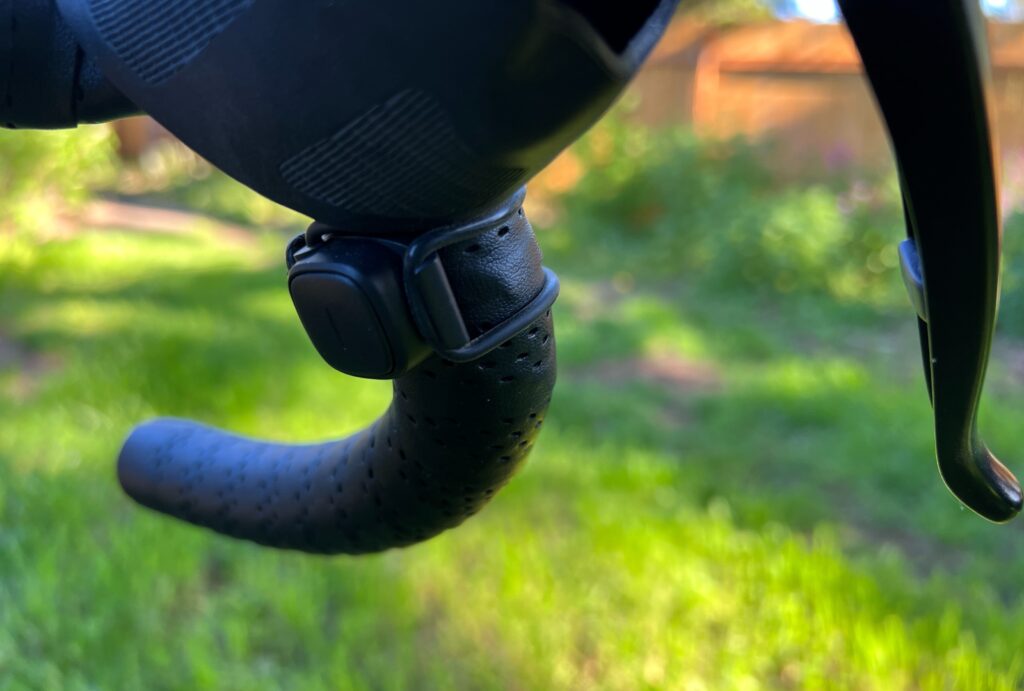
It also took me a bit to get a feel for the single SRAM Rival 1 shifter on the right bar, which shifts up and down. Once I got the hang of it, though, operating became second nature. The lever also moves back and forth and side to side, which took a while to get used to as well.
The two small buttons that operate the assist level and data screen require a purposeful reach with my thumbs — so much so that I first thought they were not installed correctly. However, there’s no better spot for them on the handlebars; my thumbs (and wrist) eventually figured out the reach.
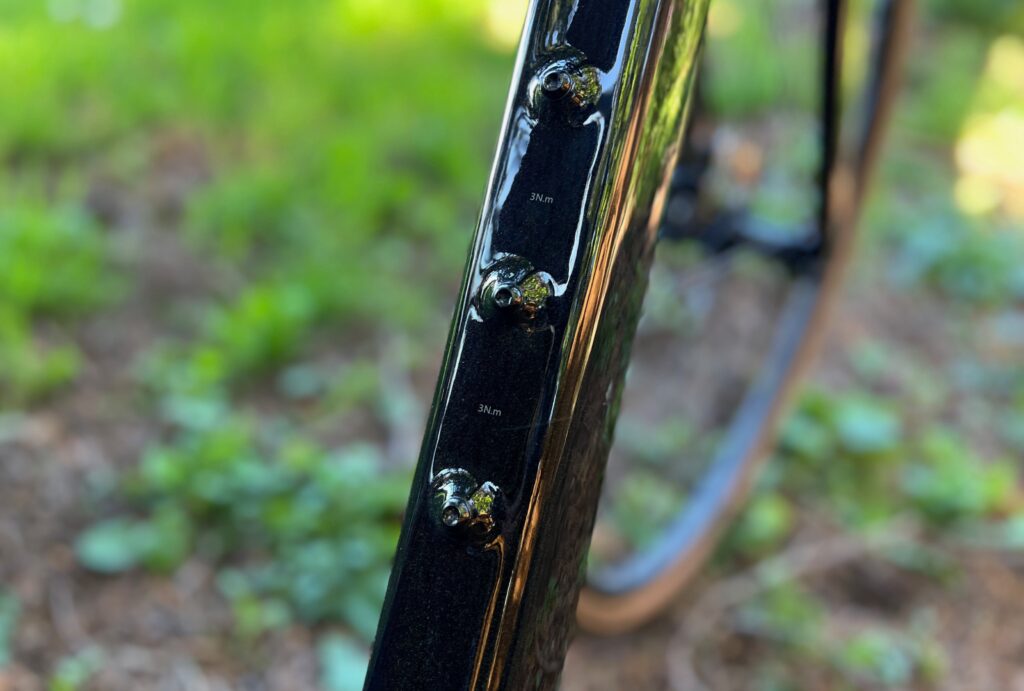
Finally, the small, in-frame battery limits range to just 40 miles at most. But the beauty of the CF Racer1’s very low weight is that pedaling sans assist is essentially the same as riding an analog performance bicycle, so it’s no hardship to run the battery flat. Plus, Ride1Up offers a second battery that fits the water bottle cage mount, but I was unable to test that option.

